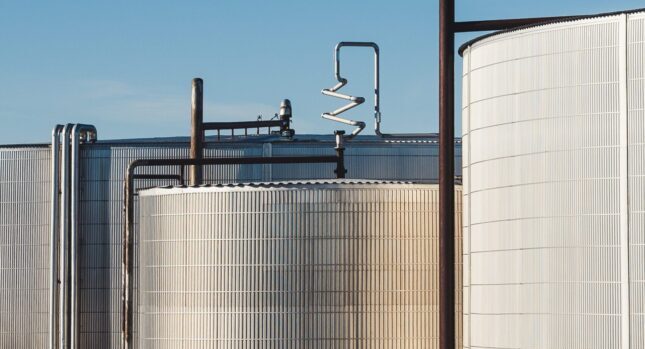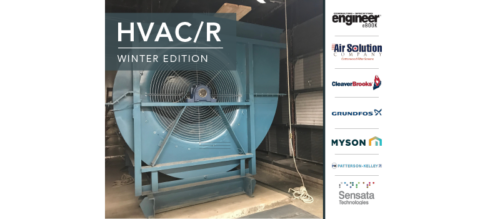How to design sustainable and adaptable HVAC systems for hospitals
Hospitals and health care facilities in intense climates present unique challenges when designing HVAC systems
HVAC insights
- Designing HVAC systems for hospitals in challenging coastal climates involves considerations such as corrosion resistance, material selection and preparation for natural disasters like hurricanes.
- In response to the need for increased security in hospital emergency departments post-pandemic, projects now incorporate features like exterior door lockdown capabilities, enhanced surveillance and improved separation between patients and staff.

Respondents:
- John Blanton, PE, Senior Mechanical Engineer, Certus, Dallas, Texas
- Brian Evan, PE, Associate, Wold Architects & Engineers, Saint Paul, Minnesota
- Kristie J. Tiller, PE, LEED, AP, Associate, Director of Mechanical Engineering, Lockwood, Andrews and Newnam Inc., Dallas, Texas
- Tim Willoughby, PE, Mechanical Engineering Principal, HDR, Omaha, Nebraska
John Blanton passed away unexpectedly shortly after responding to these questions. John’s legacy will continue to positively impact those he worked with and our industry for many years to come.
What unique heating or cooling systems have you specified into such projects? Describe a difficult climate in which you designed a heating, ventilation and air conditioning (HVAC) system for a hospital, health care facility or medical campus project.
John Blanton: Coastal climates are a challenge where conditions include high humidity and heat. Corrosion and deterioration of outdoor equipment also occurs at a faster rated. Combine that with the higher possibly for natural disasters such as hurricanes, and these climates can be one of the most difficult to design in. System design and material selection are important to consider.
Brian Evan: Our team worked on a new critical access hospital in Wrangell, Alaska, which is a small borough in the Southeastern Islands, where both the climate and location are difficult. Being on an island, all materials were shipped via barge, and there were no immediate supplies available. When discussing HVAC systems with the owner, ease of maintenance, availability and cost of utilities were deemed more critical than aggressive energy strategies. In this case, the owner opted for an all-electric building and maintenance-friendly variable air volume (VAV) system. We utilized electric boilers with fuel-oil backup to produce heating hot water, along with a small, air-cooled chiller. Given the coastal setting and high annual rainfall, we had to be cautious about the outdoor placement of equipment.
Tim Willoughby: We developed a design for a cooling tower system to serve both an existing chilled water system and a new chilled water system that was added for increased capacity. The installation of the new cooling tower system had to be in place before demolition of the existing cooling towers, so that the existing chiller system could stay online. The system is also set up so that the current condenser water piping feeding the existing chiller system, can be converted to the chilled water interconnection piping when the existing chiller system is removed and that load added to the new central utility plant.
What unusual or infrequently specified products or systems did you use to meet challenging heating or cooling needs? This might include active chilled beams, variable refrigerant flow, etc.
Brian Evan: We recently designed three Minnesota State Veterans Homes, which had to meet the Sustainable Building 2030 energy standard, requiring an energy and carbon reduction of 70% from a similar baseline building type. To meet this requirement, we utilized an early energy design assistance program in conjunction with the local utility. From this, we ran HVAC life cycle costs and energy use intensity (EUI) reduction analysis through energy modeling. To achieve the 70% reduction, the HVAC system chosen was a geothermal ground coupled variable refrigerant flow (VRF) system. VRF terminal units were coupled with water-cooled heat recovery heat pumps due to their increased efficiency over more traditional systems, such as VAV.
How have you worked with HVAC system or equipment design to increase a building’s energy efficiency?
Brian Evan: Our firm is part of the American Institute of Architects 2030 Commitment – an actionable climate strategy that gives a set of standards and goals for reaching net zero emissions in the built environment. Because of this, carbon reduction strategies are always at the forefront of our discussions with building owners. Stemming from this commitment, most building designs are moving toward complete electrification of HVAC systems. To help reduce energy use intensity as much as possible, geothermal solutions are being considered on most new construction projects. By installing ground-coupled heat pump systems, we can eliminate rooftop chillers and/or cooling towers, freeing up available space for photovoltaic (PV) solar arrays. Once a building’s EUI target is identified, it’s possible to offset the necessary amount of energy through the PV solar array.
What is the most challenging thing when designing HVAC systems in such buildings?
John Blanton: While health care designs have been automating most HVAC systems for a long time, designing the temperature control sequence and system operation can still be quite challenging. Each system is different and the sequences can be very complicated. During design, we must build an intricate control diagram that details every sensor, valve and control point required to accomplish the intended sequence. After the design is complete, the same sequence control diagram submittals must be reviewed in detail to ensure all critical components are included in the bill of materials. If any of these components are missed, it may cause challenges in the field to correct after the system is installed and operational.
Brian Evan: One of the challenges with moving toward electrification of HVAC systems is the amount of power required. Typically, the electrical service size is two to three times that of a traditional boiler/chiller HVAC system approach. Because of this, continual coordination with the electrical engineering team and owner is required, as the emergency generator size can quickly become very large. To keep project costs on budget, it may be necessary to make some concessions regarding the equipment and services that receive backup power during emergencies.
Kristie J. Tiller: The most challenging HVAC design in health care tends to be renovations in active facilities. Renovations are never simple, especially in older buildings, due to existing structures, utilities and equipment location. In an active health care facility, it is especially important to maintain safe and proper conditions while phasing from the old equipment to the new. As engineers, we must work hand in hand with the contractors to ensure that we maintain the health and safety of the patients while renovating existing systems. This includes proper selection of equipment type and location, the right temporary equipment and careful phasing of construction.
Tim Willoughby: The biggest challenge for hospital HVAC/plumbing design is balancing the complexity of the system design with the functionality and ease of operation. While some thought-out systems look great on paper, however, if the facilities’ staff finds this difficult to understand and operate, the system will fail.
What systems are you putting in place to combat hospital acquired infections (HAI)?
Brian Evan: The most important methods for combating hospital acquired infections (HAIs) involve factors that designers have limited control over, primarily hand hygiene and proper use of personal protective equipment. It is imperative that we specify hands-free fixtures to facilitate proper hand hygiene. On the systems side, we are designing operating rooms for surgical robots, which creates smaller incisions and reduces the risk of infection. We are also exceeding the minimum code requirements for air changes in spaces to enhance filtration and expand the sterile area. Additionally, we are incorporating ultraviolet (UV) lights, not only in air handlers for coil disinfection and full airstream disinfection, but also within rooms for surface disinfection.
Tim Willoughby: We strive to provide a cleaner environment, limiting the risk of HAI’s. The pandemic has brought a resurgence of technologies that can be utilized to achieve this. Everything from needle point ionization for air handling units to integrated operating room ceilings with UV lighting for disinfection. With respect to plumbing, we implement systems that target cleaning the domestic water systems entering the building to limit Legionella risk.
What type of specialty piping, plumbing or other systems have you specified recently? Describe the project.
John Blanton: Health care facilities have a great deal of specialty piping that you typically do not have in other types of facilities. Aside from the medical gases that are required to serve patients, hospitals use specialty equipment that requires ultra-pure water systems. To meet the stringent water quality requirements, the design typically includes reverse osmosis/deionized (RO/DI) water systems. These systems are used in laboratories, sterilization departments and dialysis. They often times have differing requirements from each other, so a facility may have multiple RO/DI systems. Specialty piping is required for these pure-water systems to prevent corrosion and contaminants in the water system.
Do you have experience and expertise with the topics mentioned in this content? You should consider contributing to our CFE Media editorial team and getting the recognition you and your company deserve. Click here to start this process.





